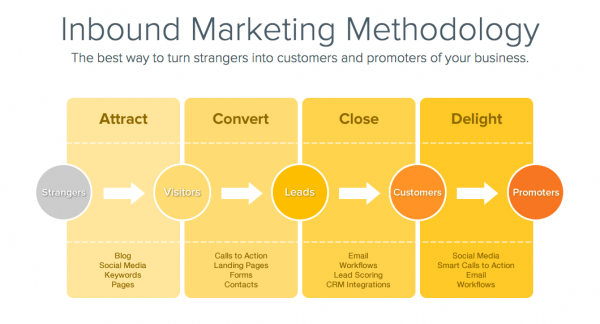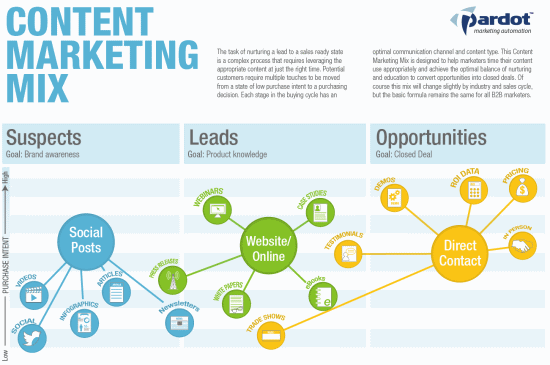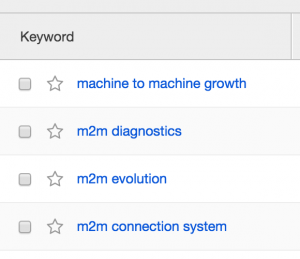
Inbound marketing is about attracting qualified leads to your company by creating content designed specifically for your target market. Inbound marketing focuses on being helpful and relevant over being disruptive and invasive. Once these leads find their way to your site, your content keeps them coming back for more, and they become long-term customers and brand advocates.

If we break down inbound marketing even further, this is what it looks like in four simple steps:
Step 1: Attract visitors using social media, search engines, your blog, advocates, referrals and email marketing.
Step 2: Convert visitors to leads using calls to action, landing pages, sharable content, and content offers.
Step 3: Turn leads into customers using email marketing, workflows, lead scoring, and CRM and marketing automation.
Step 4: Delight your customers so they become advocates. Stay in touch via email, content, and social media. Inbound marketing focuses more on attracting and social selling than cold calling.

For your inbound marketing strategy to work, it needs to be tailored to your audience and industry. Different markets are looking for different things, and your strategy needs to take those nuances into account.

Here are some things to keep in mind when using inbound marketing for IT companies:
In technology marketing especially, we tend to see companies using obscure, industry-specific keywords that their audience isn’t familiar with. To avoid this, analyze the keywords your target market uses most frequently, and create content based on your findings.
We also recommend revisiting your strategy regularly. Your keywords will evolve as your company grows, new technology emerges, and the industry advances. Industry trends should shape and define your keyword strategy longterm.


Ideally, these resources should be very specific and tailored to your target market’s pain points. For example, if your company specializes in cyber security, one resource could be “Cyber Security Planning Guide for the Healthcare Industry”. Then, make sure the guide is filled to the brim with rock-solid, genuinely helpful information.
Also, because in-depth resources are more comprehensive than standard blogs, consider requiring contact information for access. Once you’ve captured that information, you can nurture those leads via email.
Consistent content is a terrific way to achieve that goal. We recommend posting industry-specific articles, videos, and news as often as possible. Aim to create the kind of substantial information prospects will share with their colleagues.

To begin, pitch your content to IT-specific blogs and publications. Then, consider other companies whose market might have a need for your services. For example, if your company specializes in mobility management, you could form a guest-blogging connection with virtually any company or publication that markets to executives and entrepreneurs.
Remember, Inbound marketing is about attracting not disrupting--the philosophy focuses on being helpful and earning trust in order to convert more leads with less effort. Using inbound marketing for IT companies will require meaningful content, thoughtful placement and a well-designed website to serve as a foundation for lead generation efforts.
by Jonathan Franchell, CEO of Ironpaper - For more tips and hacks: Need to remove a new line after h1 tags? Both web designers and SEO practitioners need to employ headline tags: H1, H2, H3 in several ways to improve web page structure and tag...

The Crowded Arena of the IT Marketplace Updated December 2024 The Information Technology (IT) landscape is experiencing rapid growth and intensifying competition. IT spending is projected to reach nearly 5.1 trillion U.S. dollars in 2024, a...

Updated December, 2024 The field of digital marketing is evolving rapidly in response to new technology and changing buyer expectations. To help career-minded marketers, we’ve rounded up the top 10 skills needed to succeed in the field. These are...

The marketing industry is transforming significantly due to generative AI and increasing market complexity. Gartner's prediction of a 25% decline in traditional search traffic suggests that the era of search engines is dying. AI tools, particularly...
